star
Latest
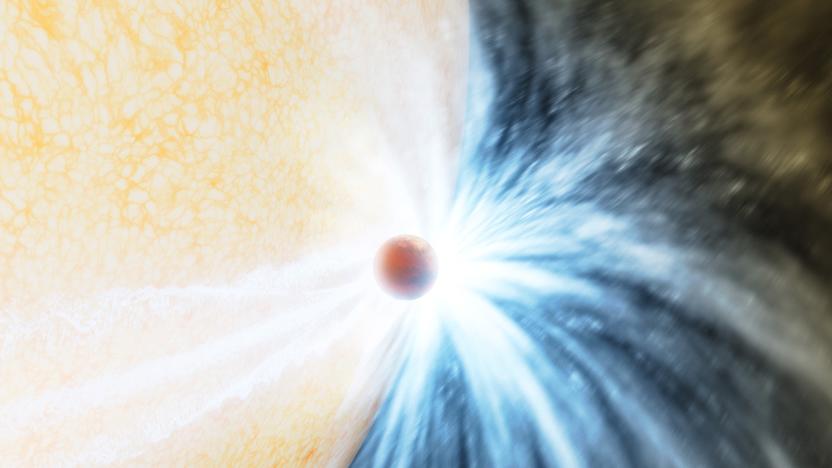
Astronomers finally spot a star consuming a planet
For the first time, scientists have spotted a star eating a planet.

James Webb telescope captures Pillars of Creation in unprecedented detail
The James Webb telescope has captured an image of the Pillars of Creation that could reshape thinking about star formation.

‘The Dropout’ offers a timely reminder of the Theranos madness
We review Hulu's new dramatization of the Theranos madness.
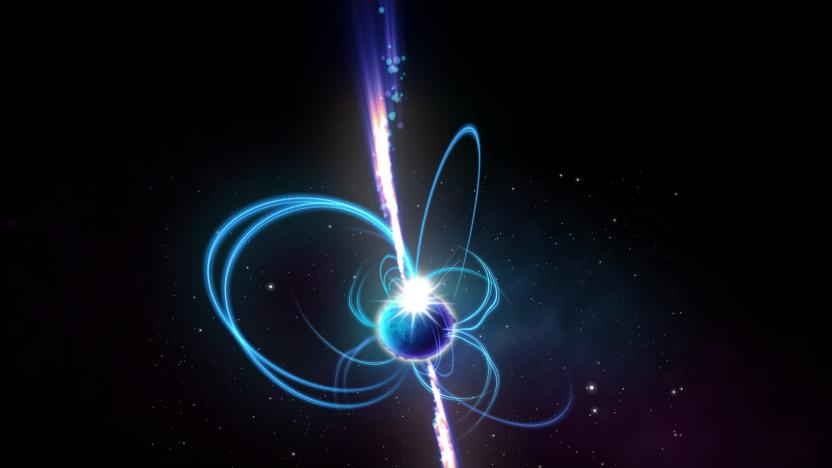
Strange Milky Way object sends radio bursts a minute at a time
A strange object in the Milky Way galaxy is sending radio bursts a minute at a time, and it's not necessarily a neutron star.

Scientists observe a red supergiant going supernova for the first time
Astronomers have captured a red supergiant supernova explosion for the first time, gathering crucial new information about these dramatic events.

A star fragment is flying out of our galaxy at nearly two million miles per hour
Scientists have studied a supernova star fragment flying out of the Milky Way galaxy at nearly two million miles per hour.

What you need to know about Disney+ Star
Today, in several countries outside the US, Disney+ is debuting a new "channel" dubbed Star. It's the new bucket into which the media giant will put all of its titles not suitable for young eyes.
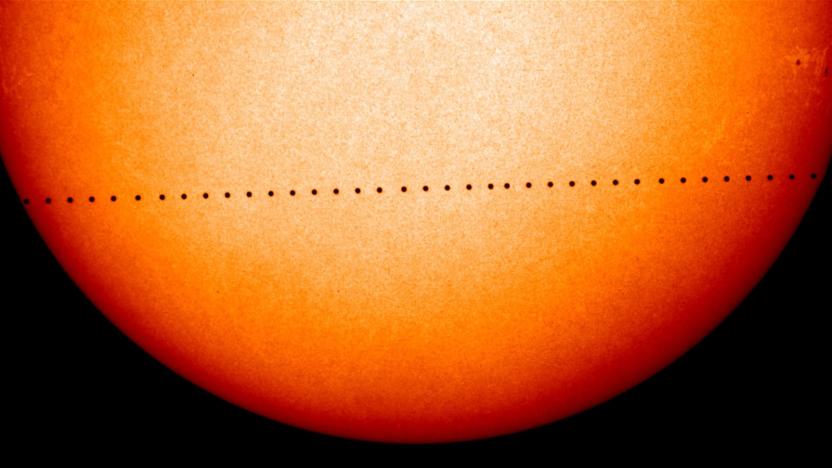
How to safely watch Mercury pass in front of the Sun today
Mercury is about to take a rare trip between the Sun and the Earth, giving viewers around the world a rare and dramatic glimpse of the solar system's innermost planet. The transit will take about five and half hours and start at around 7:35 AM ET, according to NASA. If you've always wanted to see the phenomenon, now's the time, as it won't happen again until 2032 -- and won't be seen again in North and South America until 2049.
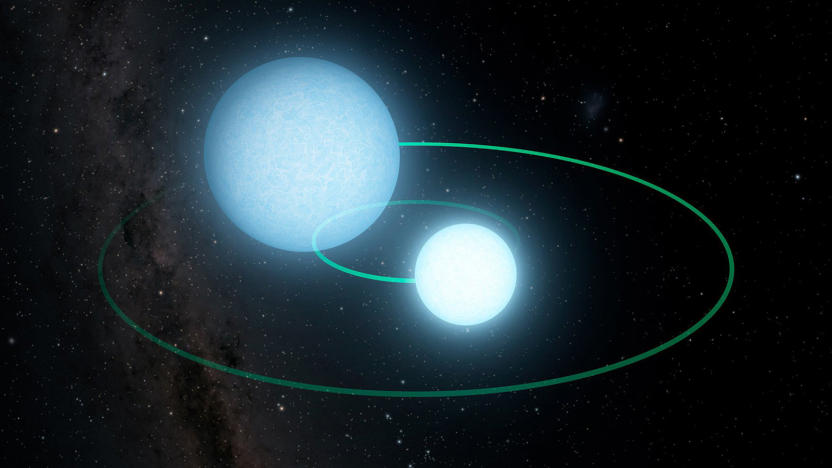
Two dead, dancing stars challenge astronomers' expectations
Stars still have plenty of surprises despite (or perhaps, because of) advances in astronomy. Researchers using Caltech's Zwicky Transient Facility have discovered a binary white dwarf system 8,000 light-years away, ZTF J1539+5027, where the two dead stars orbit each other every seven minutes. That's the second-fastest pair of white dwarfs seen to date, and the fastest such "eclipsing" system (where one passes between its partner and Earth). This isn't the first time they've seen one white dwarf 'eat' the other, but it's rare to catch this cannibalization in the act.

NASA launches Parker Solar Probe in mission to 'touch' the Sun
After a few delays, the Sun-chasing Parker Solar Probe is on its way. NASA launched the spacecraft aboard a ULA Delta IV Heavy rocket at 3:31AM Eastern this morning (August 12th) and confirmed that the vessel was healthy at 5:33AM. The probe still has a ways to go before it's conducting scientific studies. It'll spend its first week in space deploying its high-gain antenna, the first part of its electric field antennas and its magnetometer. In early September, the probe will start a roughly four-week instrument shakedown to be sure it's ready for science gathering.
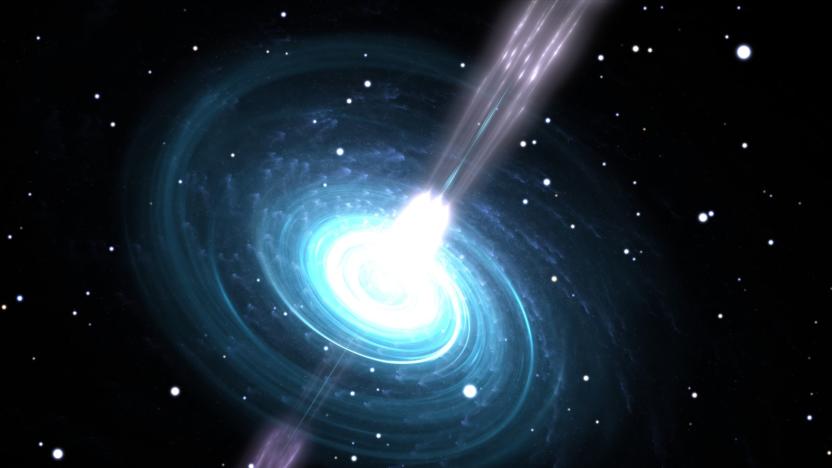
Radio telescopes show theory of gravity holds in extreme situations
Radio telescopes have been crucial to some significant discoveries regarding the nature of the universe. Now, though, they're verifying the basic rules of the cosmos. An international group of astronomers has shown that Einstein's theory of gravity holds up even in more extreme situations. The team spent six years using a trio of radio telescopes (Arecibo, Green Bank and Westerbork Synthesis) to track an unusual three-star system with a pulsar bracketed by two white dwarfs -- a textbook example of extreme gravity in action. How that pulsar moved would determine whether or not Einstein's concept passed muster.
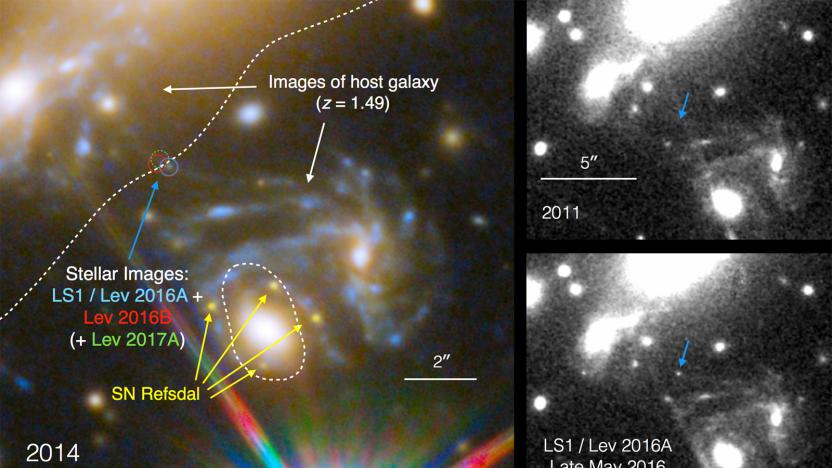
Hubble space telescope spots the farthest known star
Astronomers have spotted numerous extremely distant galaxies, but spotting individual stars is understandably much more difficult unless they go supernova. Sometimes, though, cosmic alignment works in their favor. Researchers using Hubble space telescope data have spotted Icarus (aka MACS J1149+2223 Lensed Star 1), a blue supergiant whose light was emitted when it was 9 billion light years away from Earth -- over 100 times farther than the previous record-setter. They captured the star thanks to a rare, ideal gravitational lensing effect where the star's light was magnified not only by the gravity of an in-between galaxy cluster 5 billion light years from Earth, but by a star inside that cluster. All told, the lensing magnified Icarus 2,000 times.
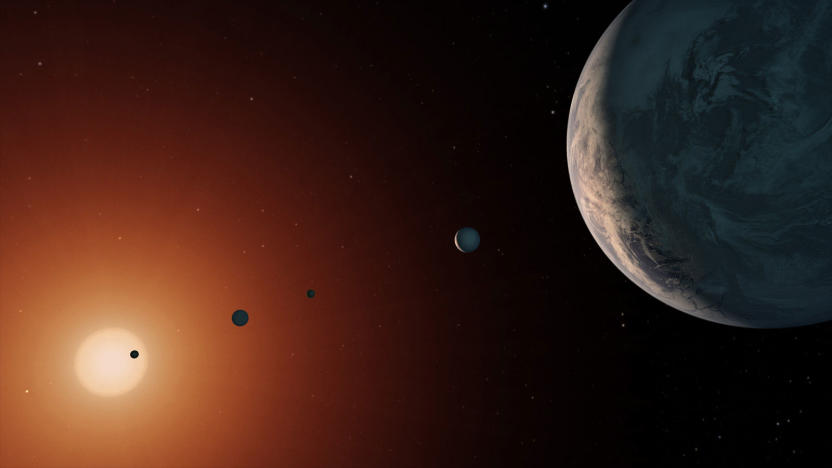
The TRAPPIST-1 star system may be too old for life
We hate to further quash hopes that the TRAPPIST-1 star system can harbor life, but... it's not looking great. Researchers have determined that the dwarf star is between 5.4 billion years old and 9.8 billion years old, or considerably older than the 4.5 billion years of the Solar System. That age isn't necessarily bad, but it increases the likelihood that any life-supporting planets around TRAPPIST-1 lost their atmospheres and water to billions of years of high-energy radiation. And even if their atmospheres were thick enough to block the radiation, there's a possibility that a Venus-like runaway greenhouse gas effect cooked the planets' surfaces.
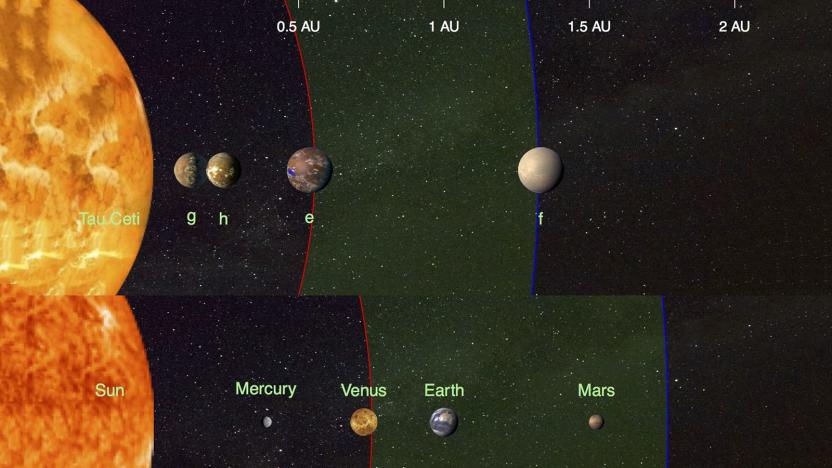
A nearby Sun-like star hosts four Earth-sized planets
Exoplanet discoveries are getting pretty common, so it takes something special to catch our attention. A star called Tau Ceti fits the bill, as it's just 12 light years away and unlike the Trappist-1 red dwarf, is very similar to our own yellow dwarf (G-type) sun. Researchers have determined that it probably hosts planets like Earth that sit in its habitable zone. The only hitch is that the star is known to have a massive debris disk that probably bombards its worlds with asteroids, so living there would be a pretty big challenge.

Edible robot surgeons will cure you from the inside out
Back in 1985, the best robotic surgeon we had was the Puma 560, a manipulator arm just barely more advanced than Rocky Balboa's robo-butler. Just barely. The Puma was nevertheless revolutionary. It was the very first mechanical operator, progenitor to steady-handed robo-surgeons like the DaVinci system. But in the near future, robots will no longer be cutting into us -- from the outside, at least.
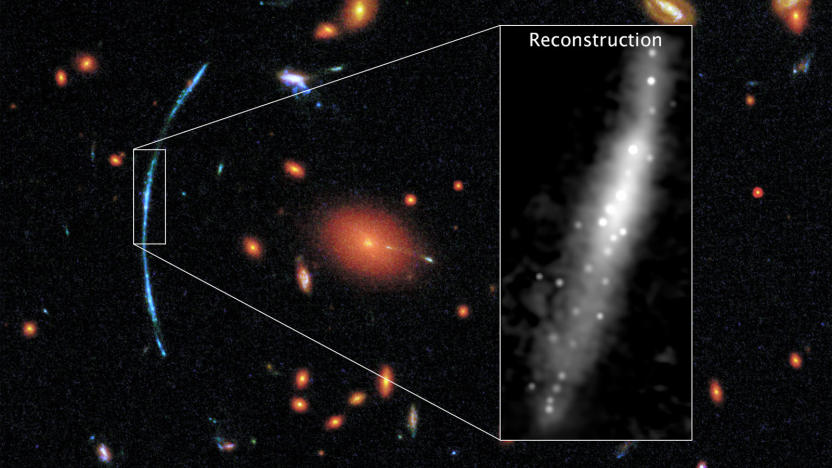
Early universe 'fireworks' challenge notions of how stars form
At the rate things are going, astronomers may have to toss out the rule book for galaxy formation. Researchers using the Hubble Space Telescope have discovered an ancient galaxy (formed 2.7 billion years after the Big Bang) with two dozen star nurseries measuring 'just' 200 to 300 light years across. That sounds big, but scientists had expected that early universe star-forming regions had to be enormous, at 3,000 light years across or larger. Here, they're so tightly packed together that NASA researcher Jane Rigby likens them to "fireworks" popping off at a cosmic scale.
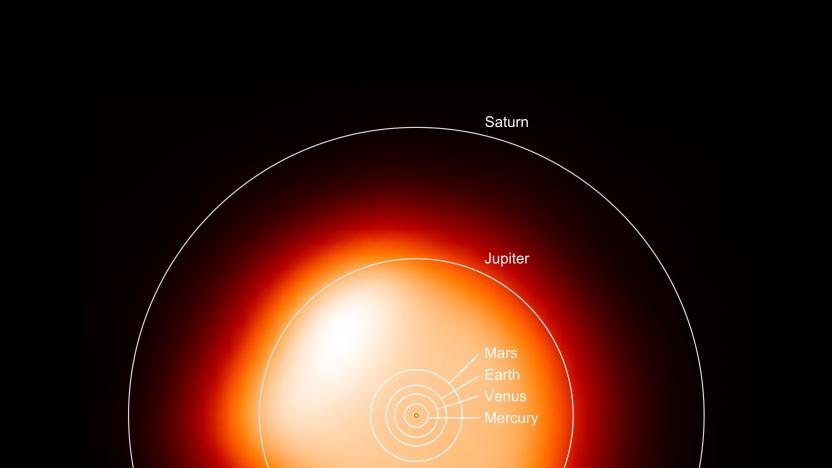
Astronomers capture best picture yet of the star in Orion’s armpit
Betelgeuse isn't just an etymological inspiration for Michael Keaton's best role, it's a colossal star forming the right shoulder in the well-known constellation Orion. Astronomers used the Atacama Large Millimeter Array (ALMA) in Northern Chile to photograph it, producing the most detailed image yet of any star besides our own sun.

Our sun used to have a twin star named Nemesis
Astronomers have long been puzzled by the fact that our sun doesn't have a companion star. After all, most similar stars are part of a binary, or even triplet, system. Now, scientists may have confirmed a long-held theory: The sun did once have a companion star that has been dubbed "Nemesis."

Stars can turn into black holes without a supernova
As a rule, astronomers believe that stars have to explode in a supernova before they collapse into black holes. That violent death is always the cue, right? Not necessarily. Researchers have spotted a massive star 22 million light years away, N6946-BH1, that appears to have skipped the supernova step entirely -- it brightened slightly and just disappeared. Checks have ruled out a dimmed star or dust. And this probably isn't a one-off incident, either. Ohio State University's Christopher Kochanek tells NASA that 10 to 30 percent of massive stars might die in failed supernovae.
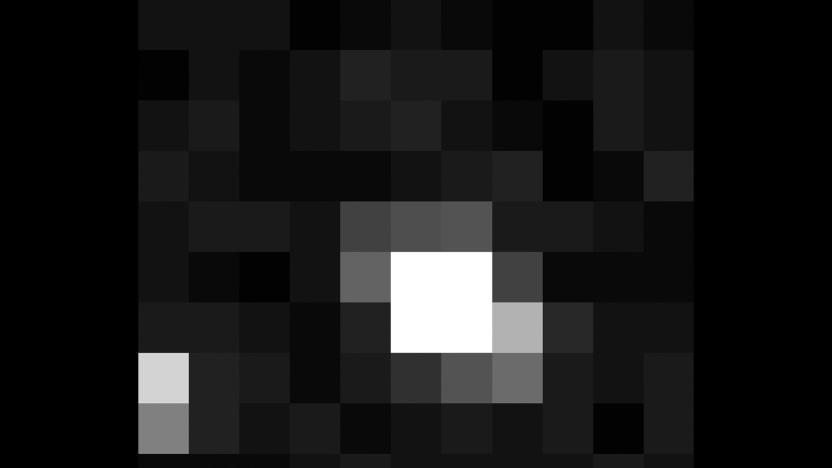
NASA offers first look at planet-rich Trappist-1 star system
NASA was quick to offer conceptual images of Trappist-1 and its abundance of Earth-sized planets. But what does the star system look like, really? At last, now we know... sort of. As part of a raw data release, NASA has offered a simple, 11-by-11 pixel animation that shows the dwarf star as it was on February 22nd. Technically, you're looking at a target pixel file that represents the light levels the Kepler space telescope caught while studying Trappist-1 for an hour. You won't see planets, unfortunately -- an Earth-like planet would barely make a blip in the brightness levels, even if it crossed directly in front of the star.





